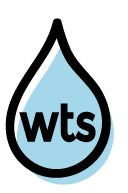What do I mean when I say “expressive language?” How is that different from speech? Feel free to check back on my post regarding different categories for birth to three-year-olds which breaks down various subcategories within expressive language.
Here’s a quick review:
Speech is how something is said. Think about speech sounds such as “s” and “l” (check out some tips on how to say “l”!) When a child is having difficulty pronouncing sounds, then he likely has an issue with speech. As a side note, motor planning and skills play a role in speech production, so a problem with speech is not always a clear-cut issue.
Expressive language is the content, or the what, of what is said (or written). Expressive language is broken down into two main components: spoken and written language. I will be discussing both in general below to give you a snapshot of where your 4 to 5-year-old should be at.
Spoken Language
Spoken language is defined as the words that we say when we speak aloud. This age-range is particularly exciting because this is when children string together longer sentences and learn the rules of the English language, also known as grammar or syntax. People understand what your child says and you no longer have to act as the interpreter. You might be wondering – what are some examples of what your child should be doing at this age?
- Telling/re-telling short stories sequentially
- Answer “who, what, where, when” questions
- Answer “why” and “how” questions around
- Count to 20 (at least)
- Say the days of the week and months of the year
- Count by 10’s
- Sings songs and nursery rhymes
- Is understood by unfamiliar listeners 100% of the time
- Uses simple sentences 4-6 words in length on average
- Uses more complex sentences to express ideas and thoughts
- Uses regular past tense consistently and familiar irregular past tense
Written Language
This is a critical point in your child’s development because he or she is not only mastering the art of spoken language but also translating that knowledge into the orthographic, or written, component of language. In the birth-three section, I mentioned not to panic because your child is not expected to be writing all of the letters of the alphabet between 0 and 3 years of age. However, this is the age range where that changes. What should you expect from your 4 to 5-year-old when it comes to writing?
- Write all letters in the alphabet, upper and lowercase
- Spell out words phonetically
- Write familiar sight words
- Write short and simple sentences
Expressive language is quite complicated and interconnected. I am excited to explore and unpack more information with you in more detail in future posts! Stay tuned for tips on how to “Water the Sponge” when it comes to expressive language.
Have questions? Feel free to drop a comment below!



Your information is clear and helpful, do you have a citation for the places you extracted the information from?